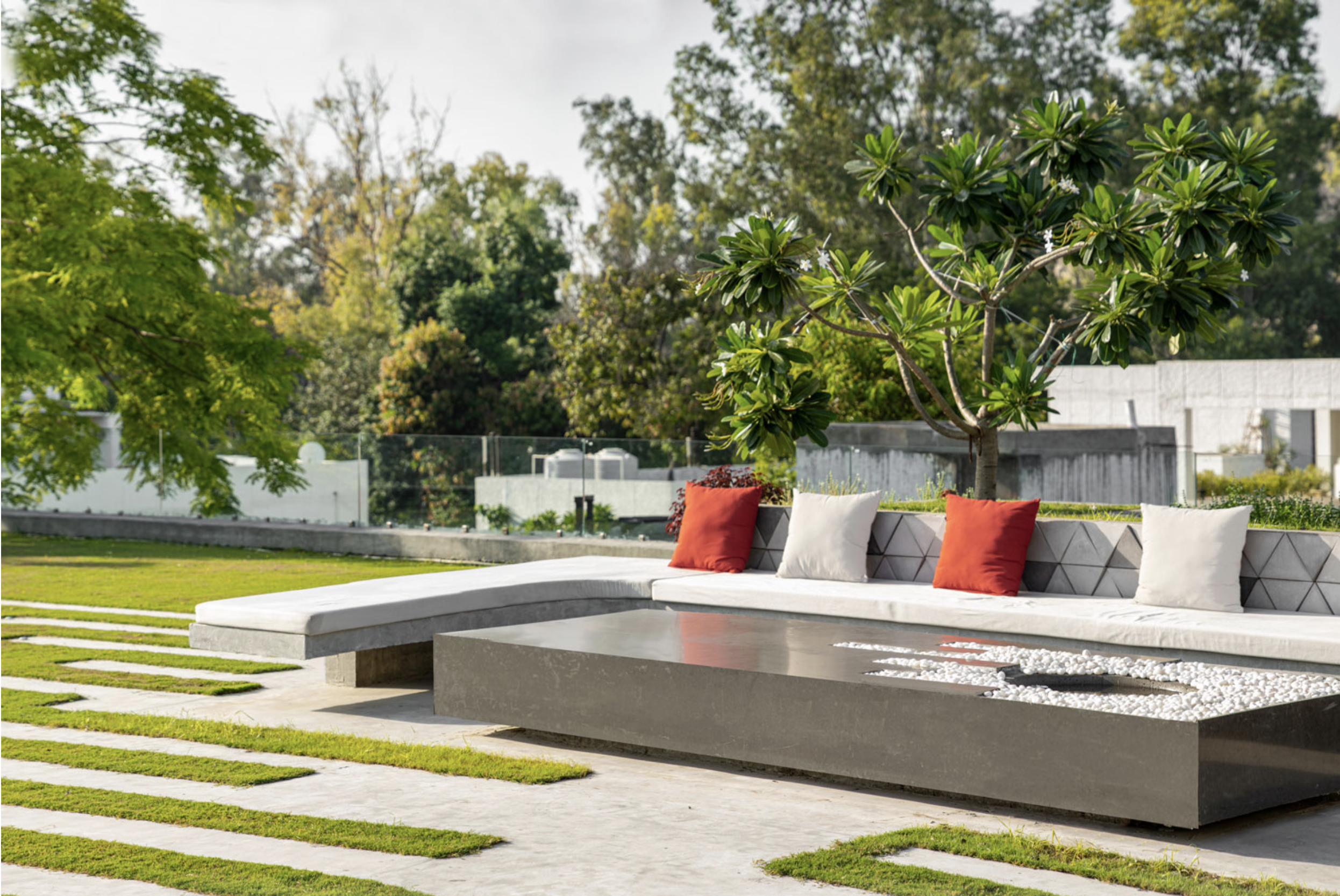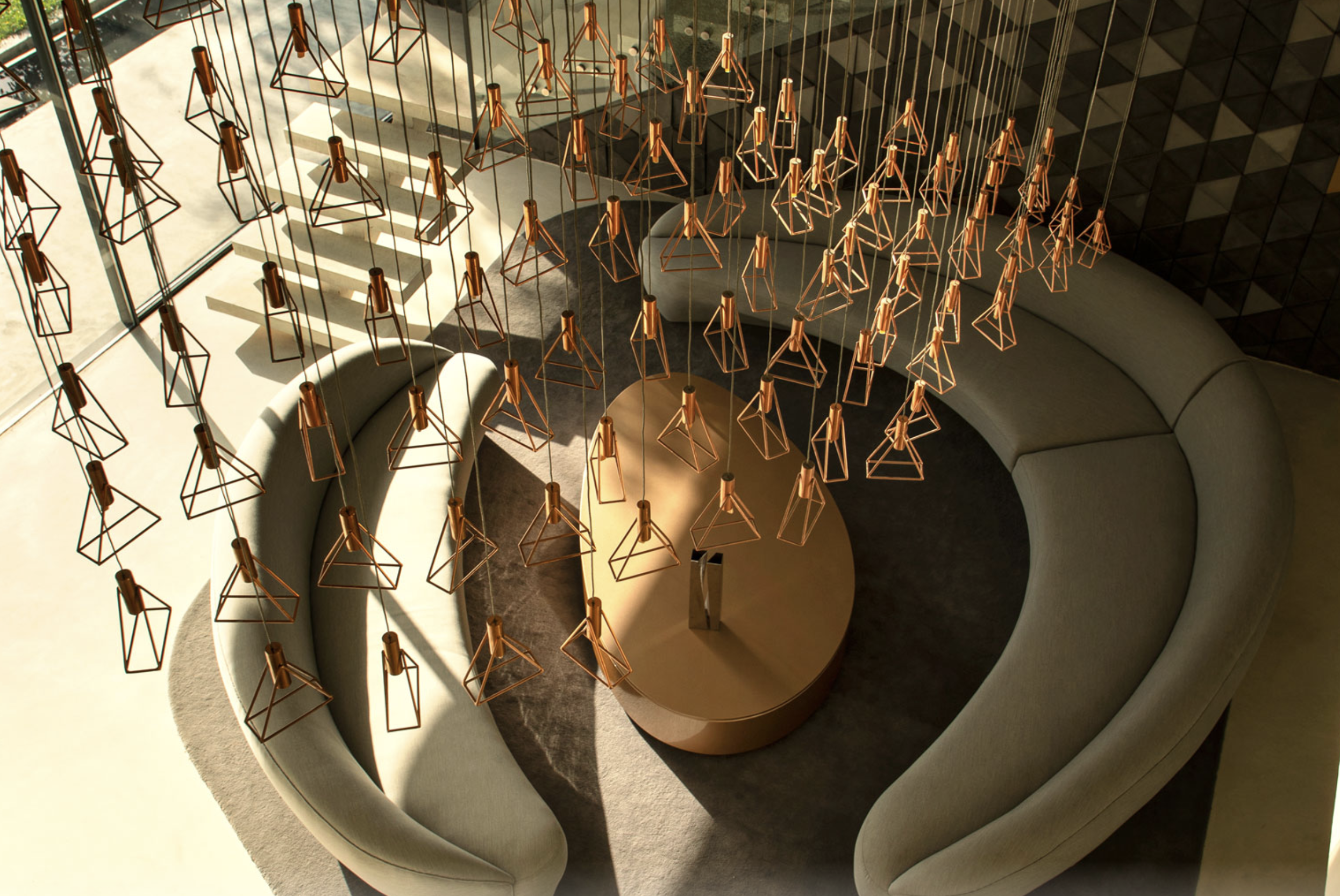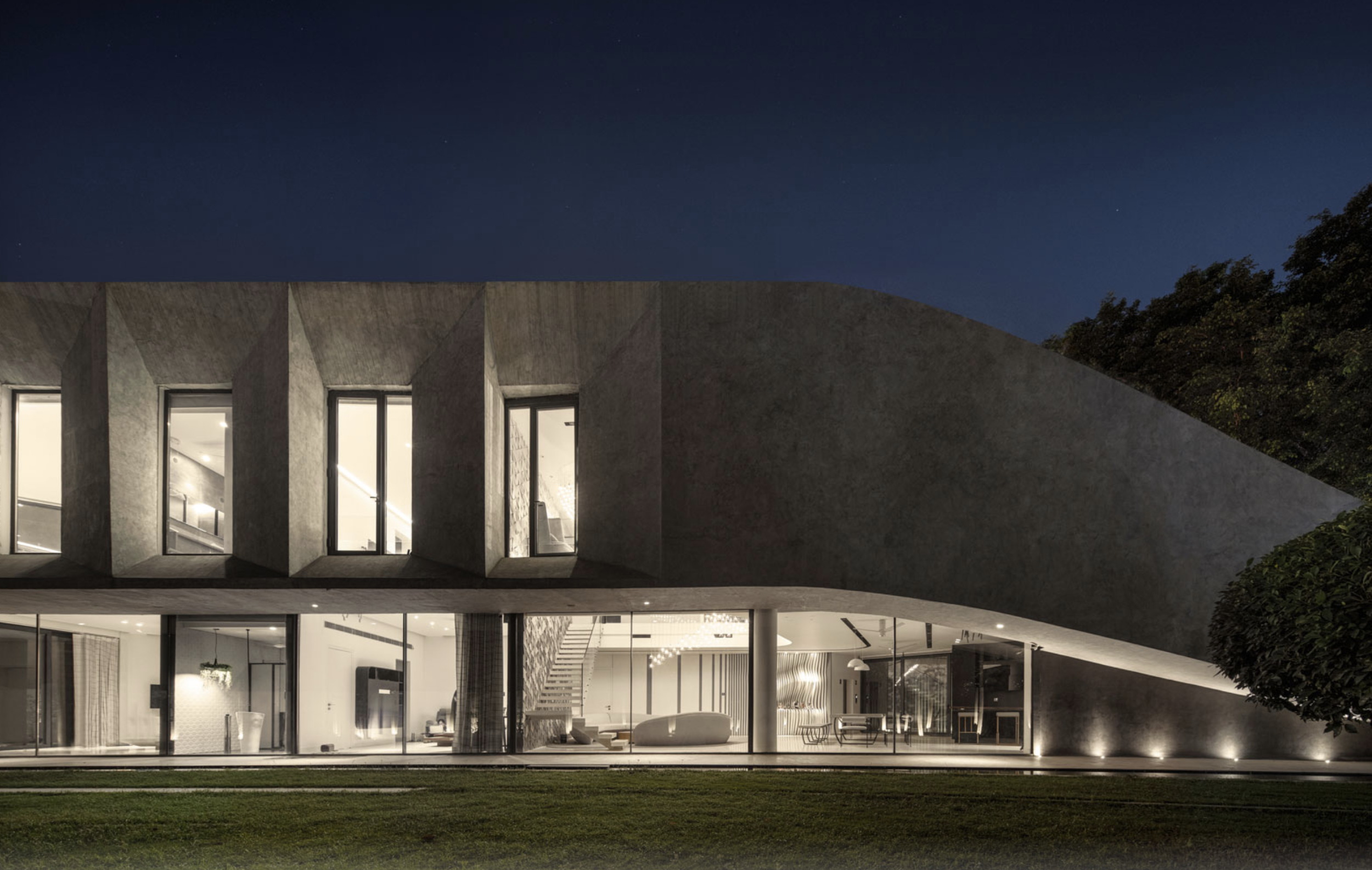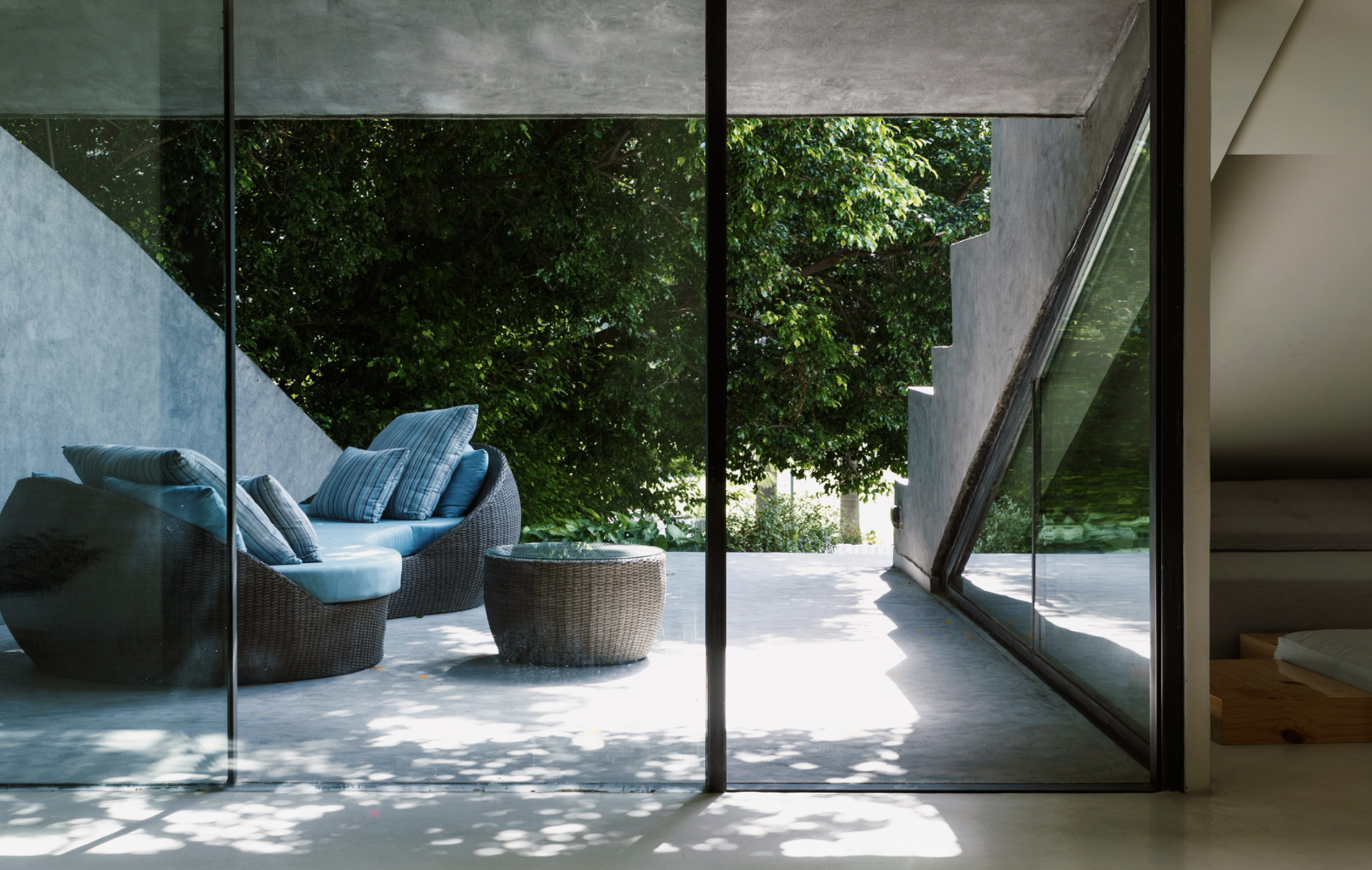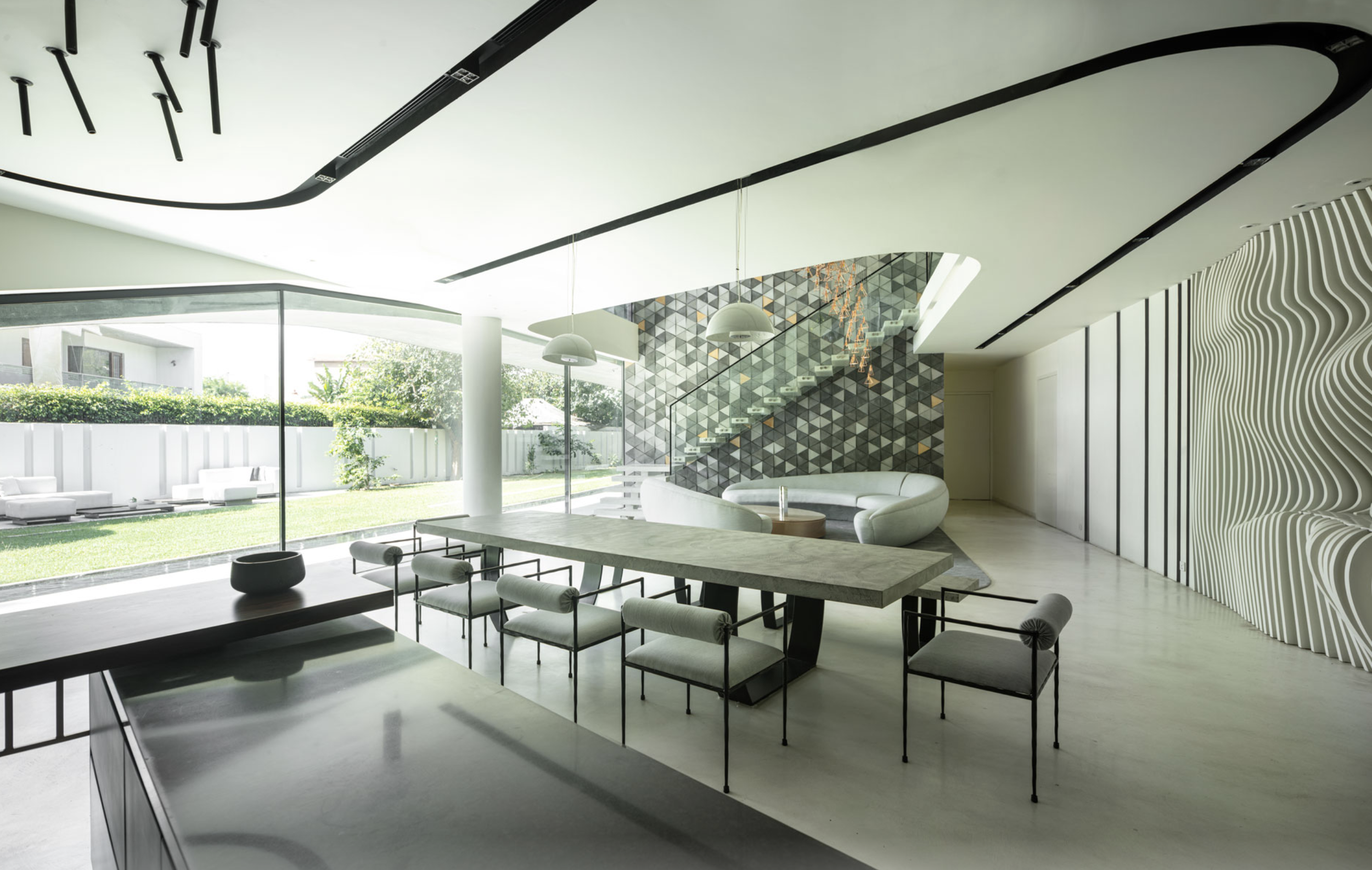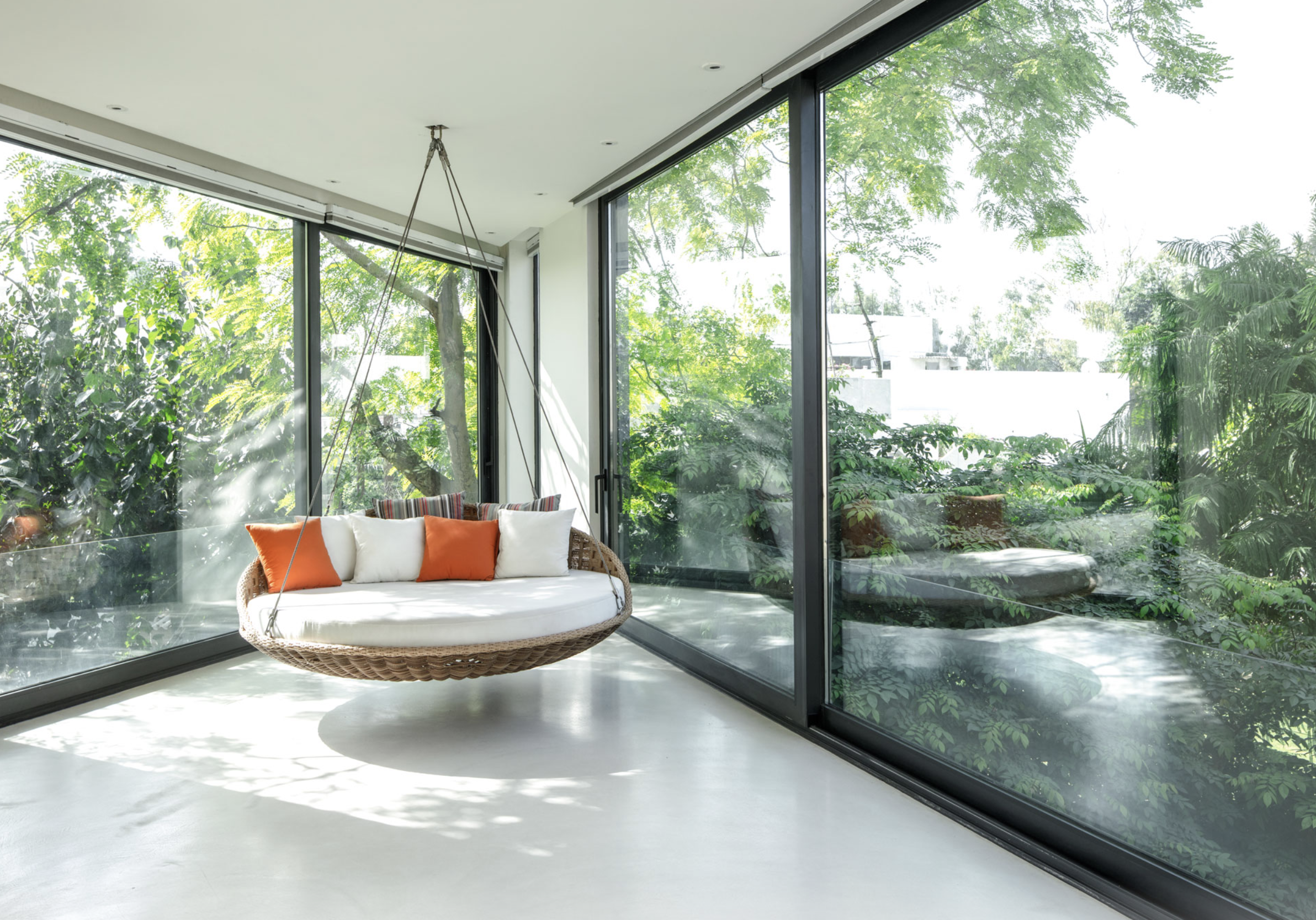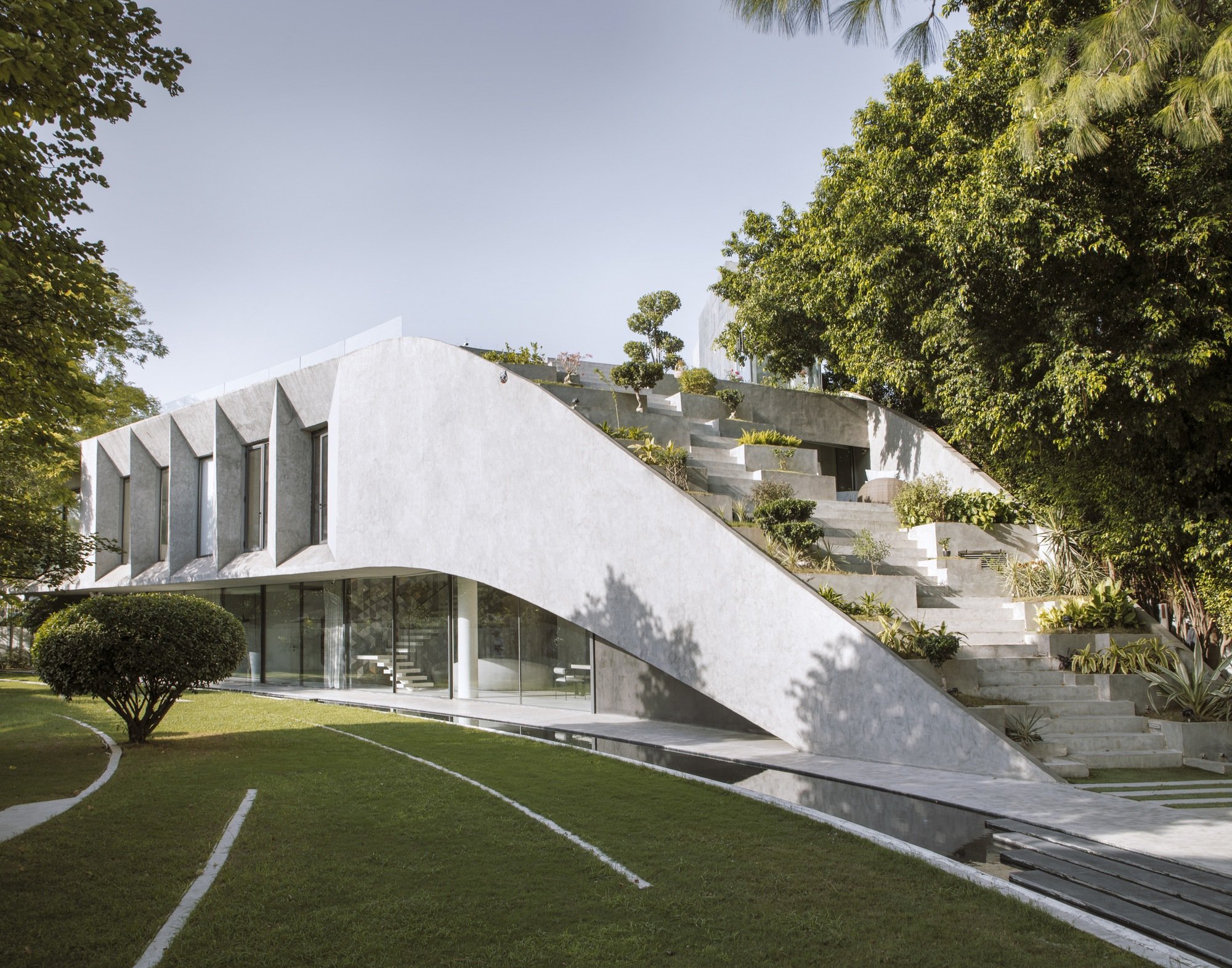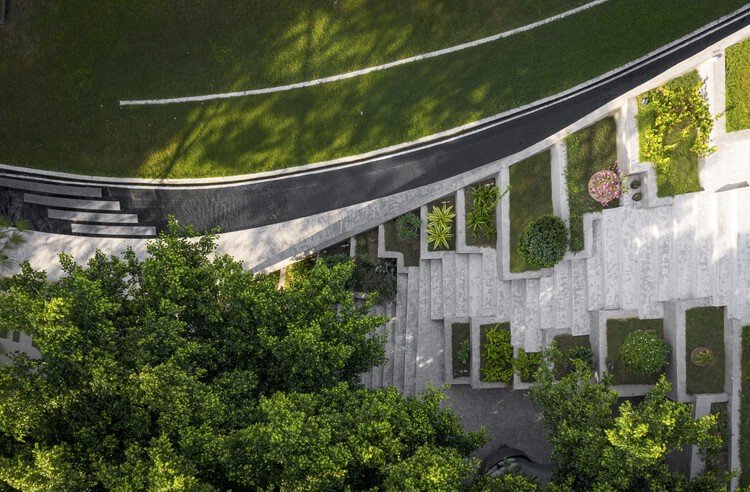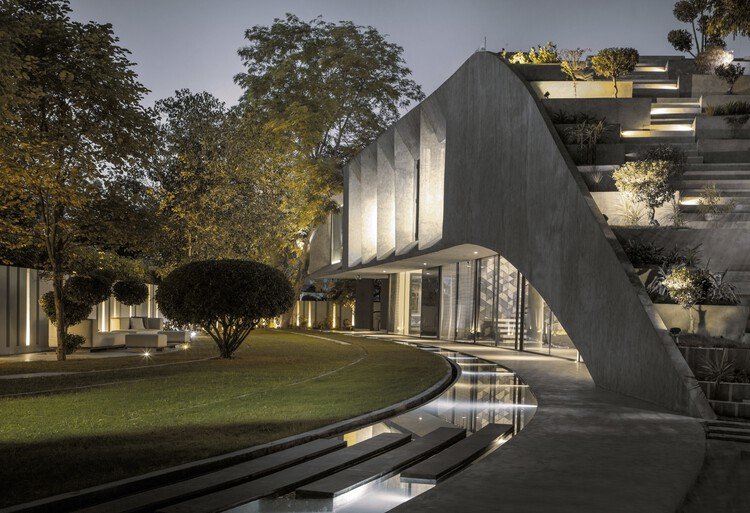VILLA KD 45
In urban setting, there is a growing disconnect between the user and nature. With this project we are looking at creating green urban living, to rekindle the relationship of the residents with nature in their immediate surroundings. This villa emerges from the landscape, with the central theme of creating maximum green cover on site and utilize the views of the park facing the site.
The odd shape of the plot along with the views to the neighbourhood park were used as design drivers. Thematically the design looks at flowing the green of the neighbourhood park in the site, with streamlines emerging from the park facing southern side and opening up towards the northern edge of the site. This base grid has been used to define the built-form and landscape zones such as water bodies, hard scape and soft scape.
The built form is strategically placed on one edge of the site, resulting in a generous landscaped garden on west side of the plot which opens up to the double height family living & dining, thereby extending as an outdoor living room. The built form emerges from the landscape and blend the ground floor to the roof of the building, creating an outdoor connective spine for the villa. This meandering stepped walkway has an outdoor space on the first floor with outdoor shaded seating and connects further to the terrace. This outdoor terrace space created on the first floor acts as a balcony and at the same time as direct entrance to the first floor apartment. Landscape garden on the terrace enjoys the views of the neighbourhood park with a feeling of being nested with nature. These three outdoor spaces have different usability based on time of day and season of the year.
Existing trees on site have been retained in the design and the shading from these trees have been used to create ambient outdoor spaces, which could be used in the extreme climatic conditions of Delhi NCR.
Design intent was to creating a dichotomy in façade with lower façade being light in nature and a heavy volume floating on top of it. Ground floor has glass façade to connect with outdoor green spaces, and first floor has punched windows carved out of concrete to minimize heat gain as this façade is directly exposed to sun.
A double height living, dining and open kitchen space combines the two family floors into one zone of family living and thereby strengthening the family connectivity.
Sustainable design strategies have been inculcated in the design, to create ambient indoor and outdoor spaces. Ground floor has a deep cantilever on south-west and east facing façade on ground floor to cut the harsh summer sun. Water bodies are provided on ground floor and terrace to promote evaporative cooling. The roof of the building is a landscaped terrace with earth and grass, this helps further to cut down the direct heat gain of the villa.
Given the hot climatic conditions of Delhi-NCR this project has been designed for human comfort both indoors and outdoors. Shallow water body on the ground floor has been placed in the path of the wind direction, helping in evaporative cooling. The main south-west facing facade on the ground is recessed to block the direct sunlight during the day, yet maintaining a seamless visual connection to the outside. In the early evening some rays of sunlight animate the interior. Upper floor of the building is made of concrete with windows recessed back to cut the south sun.
The three existing trees on site have been retained, creating zones of shadow in the landscape and also help in reducing the sun exposure of the villa. The green cover on the terrace as well as the meandering steps, ensure a reduction of direct heat gain. Wind direction was taken into account for cross ventilation in the house.
Studio Symbiosis
Studio Symbiosis is an architectural, master planning & interior design studio based in Stuttgart Germany and Delhi NCR India involved in projects of various scales and sectors. The design philosophy is to create integrated design solutions imbibing amalgamated, efficient, robust and sustainable designs leading to performative architecture. The research and intent of the practice is to create performance as a design driver, to achieve Sustainable and Smart buildings.






